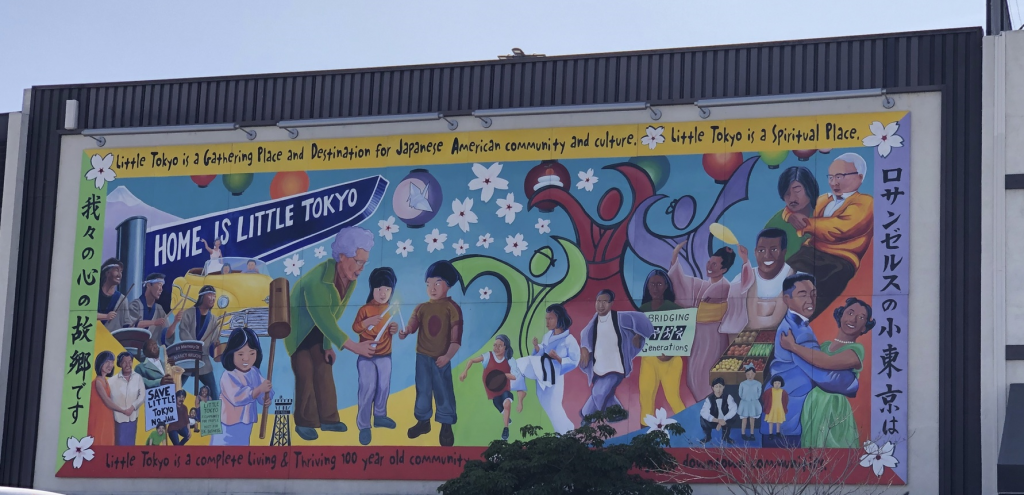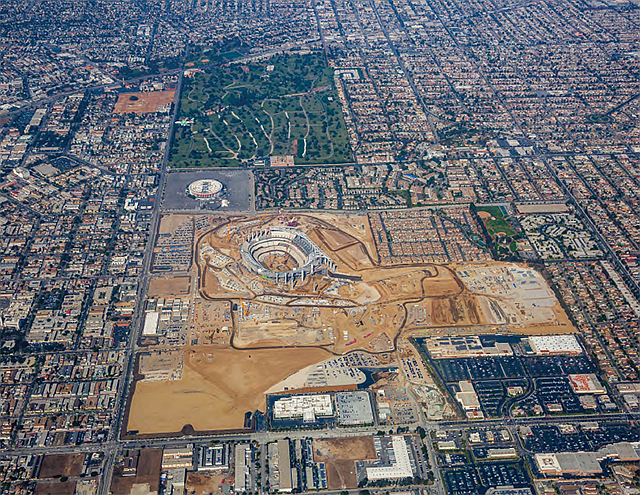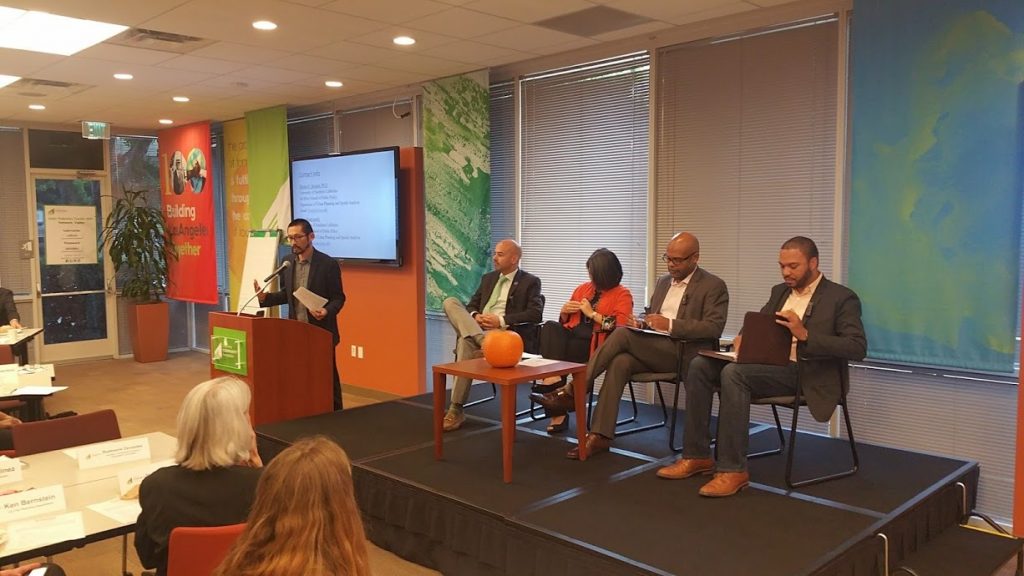SPARCC provides a path to building “the muscle of collaboration” for more equitable investments in LA communities

As the city of Inglewood plans for construction of three major sports arenas, the developments are ushering in new shops, restaurants, hotels, parks, and high-end housing, leading to the gentrification of the area and potential displacement of over 2,000 residents. As cities consider investing in a mega-development, there is often the threat of using eminent domain and other legal powers to support redevelopment. The city’s viewpoint was perceived as “bring gentrification on,” said D’Artagnan Scorza, executive Director of the Social Justice Learning Institute (SJLI) in Los Angeles which is working with residents in Inglewood to organize to prevent displacement and improve their material conditions using a social justice framework.
But long-time residents knew those supposed benefits would not likely benefit them. Already, many were being pushed out as rents jumped. So they took action. With the support of SJLI, which is one of the SPARCC LA members, residents were able to fight back.
The Social Justice Learning Institute had been active in the neighborhood for years, but its leaders say SPARCC’s resources and collaborative framework allowed them to strengthen their organizing.

SPARCC is a multi-year project in six regions across the country helping local community-based organizations ensure that major new infrastructure investments are built more equitably. SPARCC offers flexible grant funding, technical assistance, and a learning network to advance racial equity, health, and climate resilience. In the Los Angeles region, SPARCC LA consists of five local community organizations and their partners—California Community Foundation, the LA Transit, Housing, Resources and Investment for a Vibrant Economy (LA THRIVES), the Alliance for Community Transit Los Angeles (ACT-LA), Uplift Inglewood/Social Justice Learning Institute, and Building Healthy Communities Long Beach (now anchored by Long Beach Forward).
While the groups work on separate projects, their work fits under the larger umbrella of more equitable infrastructure investments. As the lead for SPARCC LA capital strategies, LA THRIVES, for example, is supporting the Thai Town Marketplace in East Hollywood, a new food and restaurant hall that includes a business incubator, affordable rent, and advice to low-income entrepreneurs. LA THRIVES’ partners, Enterprise Community Partners and the Low Income Investment Fund (LIIF),are using SPARCC capital and technical assistance to help local groups acquire commercial property, with a goal to stabilize rents and preserve opportunities for small businesses.
In Long Beach, along the southern coastal side of LA, gentrification pressures are creating demand for more affordable housing. However, wealthier homeowners are resisting such efforts. As a result, Building Healthy Communities is developing an equity-based counter-narrative to NIMBYism. It is also addressing gentrification pressures in Cambodia Town on the east side of Long Beach by ensuring immigrant-owned small businesses can remain open. Elsa Mei Tung and Christine E. Petit recently wrote about how Building Healthy Communities’ participation in SPARCC LA has led to a level of collaboration and regional connections “not seen before.”
SPARCC has “really accelerated regional networking,” said Thomas Tsun-Hung Yee, initiative officer for LA THRIVES. Before SPARCC, most organizations worked independently of each other, he said. “SPARCC gave us the platform to link together and build relationships. It allowed us to build the muscle of collaboration.” Part of that muscle includes the Community Planning Toolkit that ACT-LA developed featuring five core principles it believes can help ensure community-led, equitable development.

The five organizations now meet monthly to share strategies, coordinate efforts, and ensure that residents are heard. “All groups are working on similar issues, but it’s easy to get down in the trenches in your city and not prioritize spending time talking,” said David Levitus, director of LA Forward, who is coordinating communications work for SPARCC LA.
That means ensuring not only that there is enough affordable housing but “that mixed-use projects near transit don’t lead to displacement,” said Scorza. “Or making sure that enough landlords are using the Section 8 housing vouchers. Or making sure that transportation networks are serving those most in need and are not just a tool for people to move back into the city.”
The monthly meetings also do something else. Because members of the SPARCC LA team also include large community development funders and builders like Enterprise and LIIF, “it gives us a chance to see how capital is planned and spent,” said Scorza.
To help community members and community-based organizations better understand how capital is distributed and how decisions are made, Scorza and his colleagues have conducted “Capital 101” workshops.
“SPARCC offers a regional framework for understanding how it all fits together and how we put racial equity in the center of decision-making.”
-Thomas Tsun-Hung Yee
“Even though we’ve been organizing for housing justice, we needed to build expertise in housing policy, economic development, and understand how capital moves in communities,” he said. “SPARCC allowed us to bring community organizing together with housing policy in order to affect decision-making in the city and throughout the region.”
The goal, said Yee, is to help everyone become more fluent in capital and finance so ultimately “they’ll participate in capital projects” and see them through to the end, ensuring that neighborhood wishes are honored.
For Inglewood, the coordinated approach has paid off with a big win. For the first time in a generation, said Scorza, the city has agreed to a permanent cap on rent increases of 5 percent in Inglewood and eminent domain is off the table.
“Three years after we began the fight,” said Scorza, “we’ve got rent control and we have reduced the footprint of the stadium project down to 22 acres from 80.”
Looking ahead, SPARCC LA hopes to expand its resources to bigger projects. Yee hopes that SPARCC LA will be able to use its resources to bolster community development deals, perhaps to improve underwriting terms or otherwise enhance traditional community development loans. For Social Justice Learning Institute, it’s turning its sights to the equitable use of public land. “We want to make sure that public land is being used in our city for public good,” said Scorza. And, he said, that includes prioritizing affordable housing.